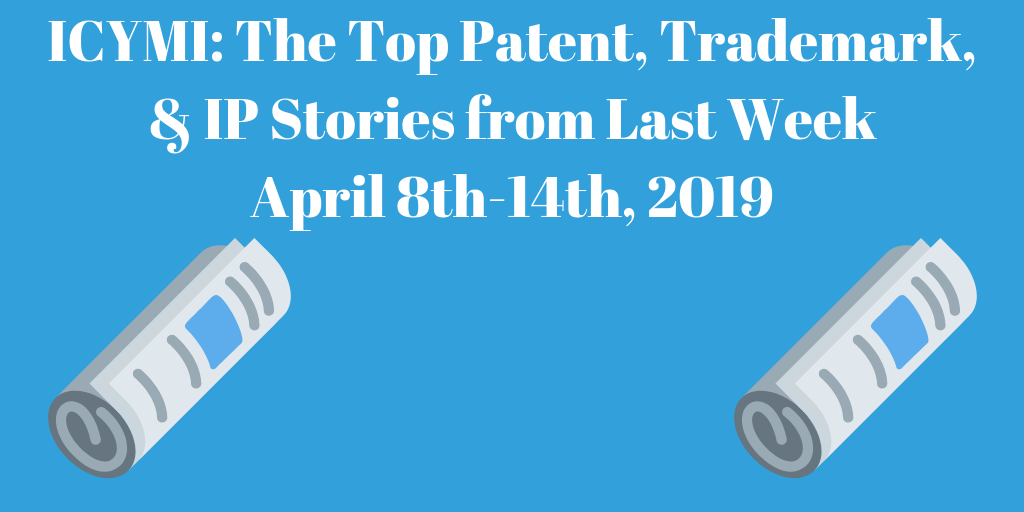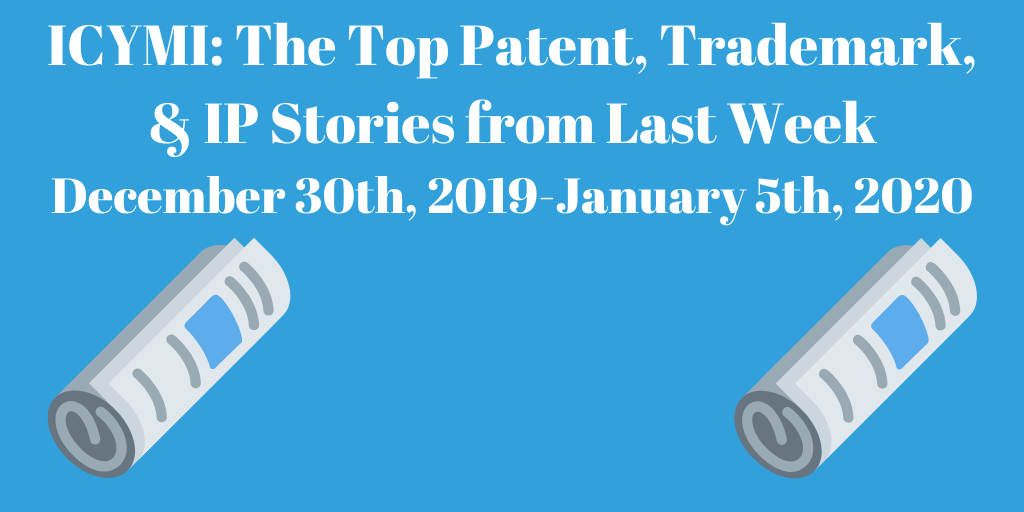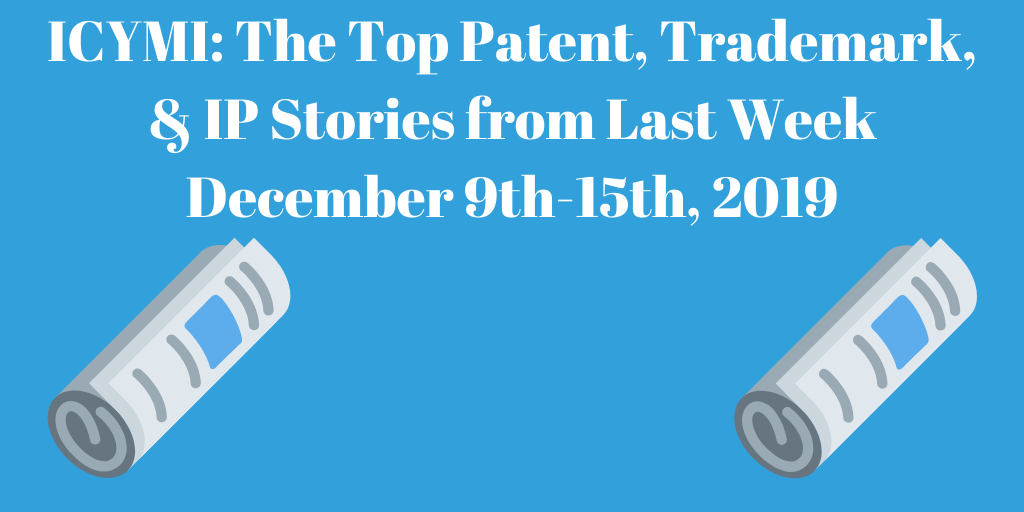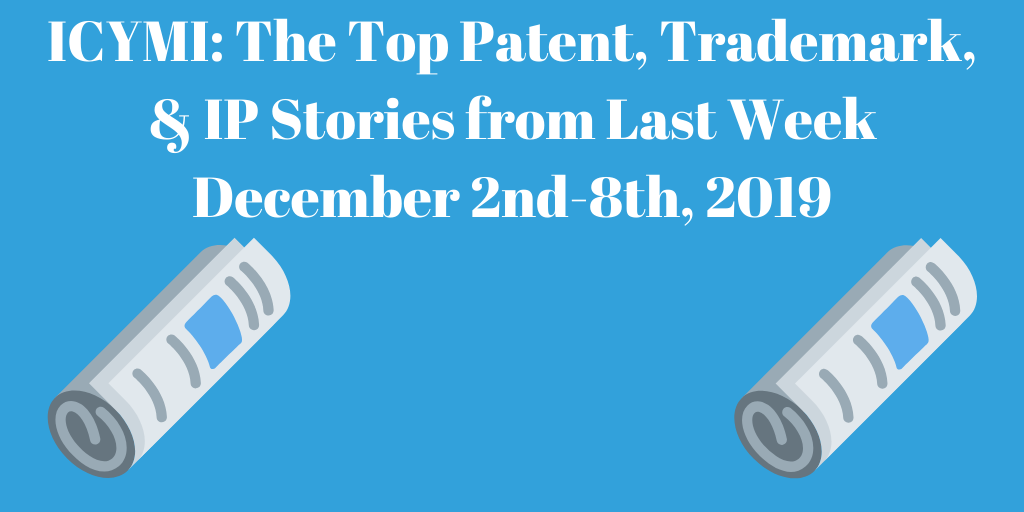Top Patent, Trademark, and IP Stories from Last Week (4/8-4/14/19)
Every week, we will be highlighting the top patent, copyright, trademark, intellectual property, etc. stories of the previous week in our “In Case You Missed It” segment. The list itself is in no particular order and includes a wide range of stories from the patent world that are informative, noteworthy, or just plain bizarre. The stories included encompass everything from Supreme Court cases to insights into growing industries. Please feel free to comment your thoughts on the stories or share an important one we missed!
1.) “The Supreme Court is About to Consider a FUCT-up Trademark Case”
The Supreme Court is set to hear Iancu v. Brunetti on April 15th. The ruling will decide whether free speech is violated by the Lanham Act’s prohibition on the registration of “immoral” or “scandalous” trademarks. The case began in 2011 when Erik Brunetti, founder of streetwear company “FUCT (Friends U Can’t Trust),” was granted, then denied, his trademark application for the brand. Brunetti started the company in 1990 and has a cult following that even the USPTO attested to.
In their decision, the USPTO ruled the mark would be perceived “as equivalent to the vulgar word for which it is a homonym.” The Trademark Trial and Appeal Board upheld the decision but believed it could not rule on First Amendment matters. When brought to the US Court of Appeals for the Federal Circuit, the court reversed the USPTO’s decision, concluding that section §2(a) of the Lanham Act was an “unconstitutional restriction of free speech.” Following the decision, the USPTO submitted a writ of certiorari to the Supreme Court.
Mr. Brunetti argues the government unconstitutionally rejects protections for marks that are “likely to offend some part of the public.” When the USPTO rejects profane marks, they do so assuming the profanity does not express an opinion. Brunetti however argues that “profanity usually expresses a viewpoint: at minimum, of non-compliance with societal mores.” In his brief to the court, Brunetti claims that despite perceived profanity, the brand is focused on “questioning authority: the assumptions of society, the government, and accepted wisdom.” If that is the case, should it be protected by the First Amendment?
Government lawyer Malcolm Stewart defending the law does not believe so. He contended the USPTO’s ruling on the trademark believing it is “a valid condition on participation in a federal programme,” not a restriction on Brunetti’s First Amendment rights. The provision is a “reasonable, viewpoint-neutral condition on the availability of government benefits,” the USPTO argues. To read more about this story, click here (via Quartz, April 14th, 2019).
2.) “Patent Eligibility of Medical Diagnostic Inventions: Where Are We Now, and Where Are We Headed?”
Two recent Federal Circuit cases have debated the patentability of medical diagnostic inventions, Athena Diagnostics v. Mayo Collaborative Services and Cleveland Clinic Foundation v. True Health Diagnostics. In Athena, the Federal Circuit affirmed the ineligibility of a patent regarding a method of diagnosing neurological disorders through the detection of antibodies on the basis of it being a law of nature. In Cleveland Clinic, the court made the same conclusion for a method of measuring MPO blood levels in patients with atherosclerosis.
Despite affirming patent ineligibility, the majority in Athena felt the ruling was limited by the Supreme Court’s decision in Mayo Collaborative Services v. Prometheus Laboratories Inc. In that 2011 case, the Supreme Court set the precedent for medical diagnostic eligibility by ruling that certain medical tests cannot be patented. Specifically, tests that detect the presence of a metabolic or other biological material and the disease that correlates with such a presence. Such tests do not meet the guidelines of Section 102 and 103 of the Patent Act on the basis that they are too obvious and unoriginal.
Author Sanjeev Mahanta, Ph.D., J.D. argues that such legal hurdles for diagnostic companies disincentivize the research and development of potentially life-saving tests. In 2016, in vitro tests accounted for 66% of clinical decisions. Based on this fact, it is imperative for clarification on the eligibility of diagnostic tests to be made so innovation can continue. To read more about this story, click here (via IPWatchdog, April 14th, 2019)
3.) “Pendulum Swings Toward Patent Owners in Agency Challenges”
In March, the USPTO launched a new pilot program aimed at providing patent holders with an easier way to amend claims and seek guidance from the Patent Trial and Appeal Board (PTAB) on its motion to amend. Such an initiative demonstrates a new direction for the agency that was considered unfriendly to patent holders over the past few years. Between 2013 and 2018, the agency denied 90% of motions to amend.
In their statement, the USPTO laid out two options patent holders will have through the pilot program (the full notice can be read here):
- “a patent owner may choose to receive preliminary guidance from the Board on its motion to amend;”
- “a patent owner may choose to file a revised motion to amend after receiving petitioner’s opposition to the original motion to amend and/or after receiving the PTAB’s preliminary guidance (if requested).”
The program expects to put a lot of burden on patent challengers who may have to draft extra briefs “up to a week before the oral hearing.” This measure has been met with delight by patent holders. The move has been considered by many a shift in USPTO attitude towards a more patent owner-friendly one. To read more about this story, click here (via Bloomberg Law, April 9th, 2019).
4.) “Capital One Presents Blockchain Patent for Content Validation”
In the past, we have covered the growing number of blockchain and cryptocurrency patents worldwide over the past few years. The institutions most interested in the emerging technology are payment services and banks. One of these companies are Capital One who was just recently granted a patent for “Cryptographic ASIC with autonomous onboard permanent storage.”
The patent outlines a content validation system for the exchange of sensitive information. The technology will generate a transform key and user passcode that will then be deleted shortly after. The use of the passcode by the user will trigger the predetermined output message and information stream.

This is not the first time Capital One has showed interest in blockchain. In 2016, the company tested out the technology for use in health care claims and analytics with the hope that it would make the process more efficient and secure. To read more about this story, click here (via CoinTelegraph, April 8th, 2019).




